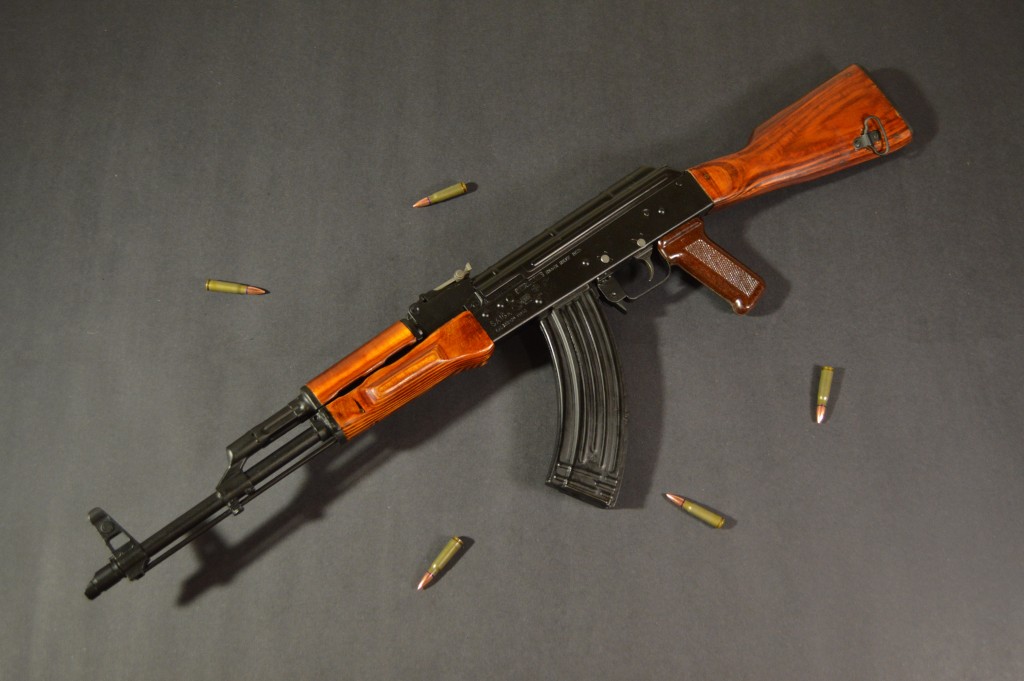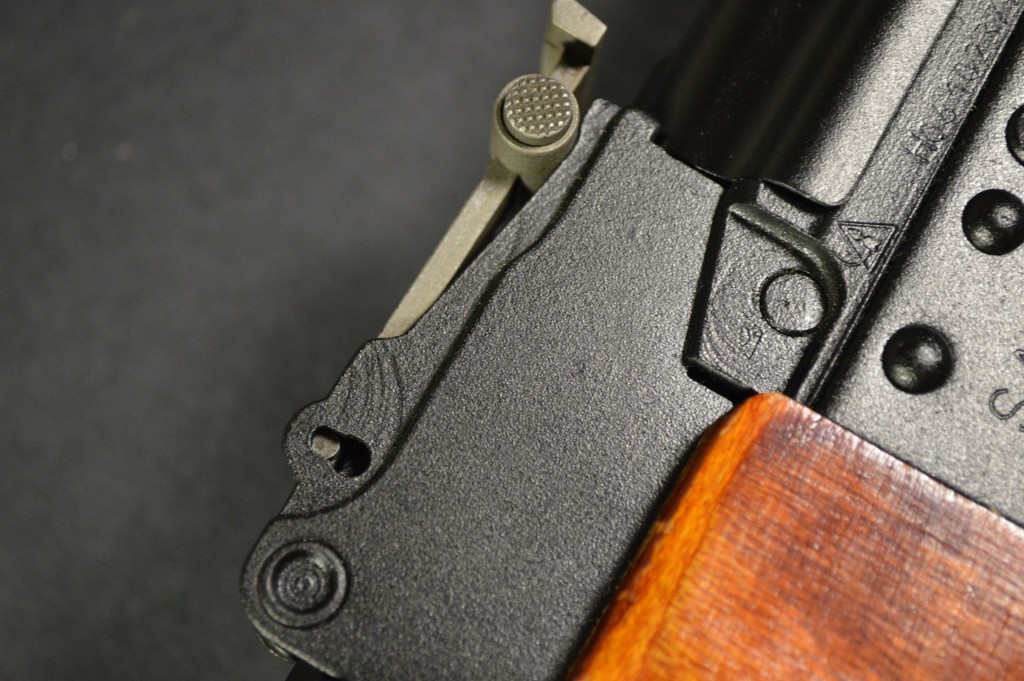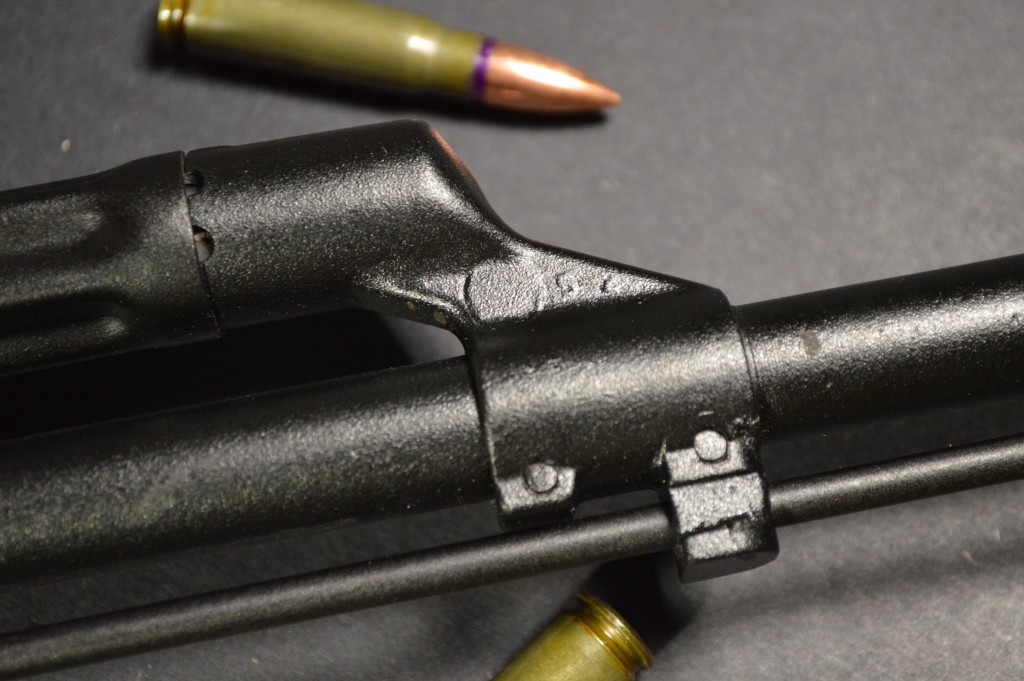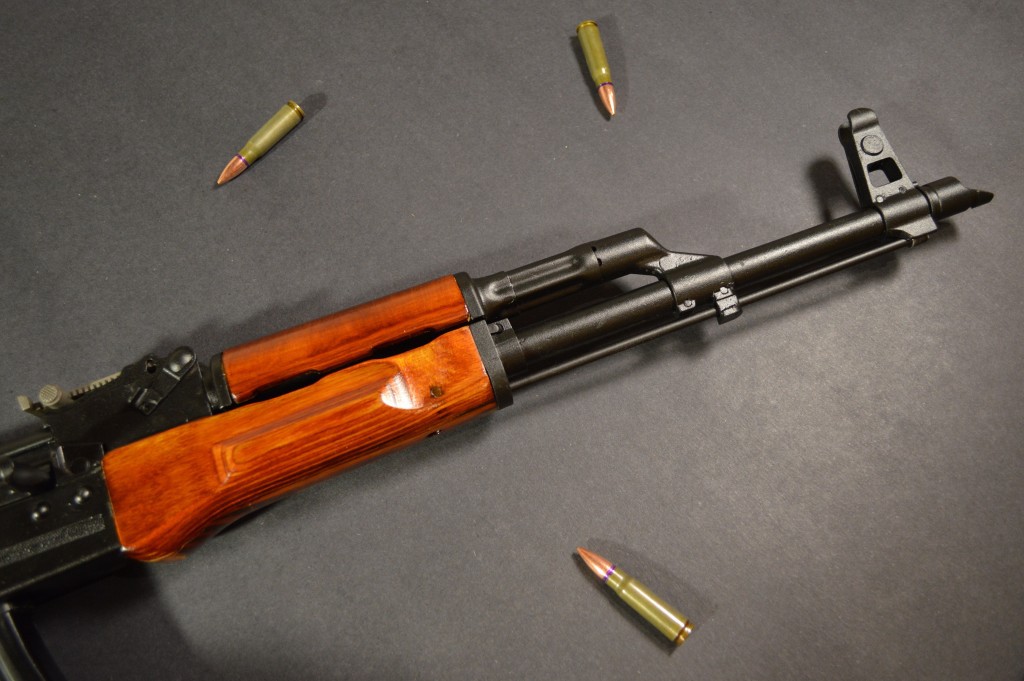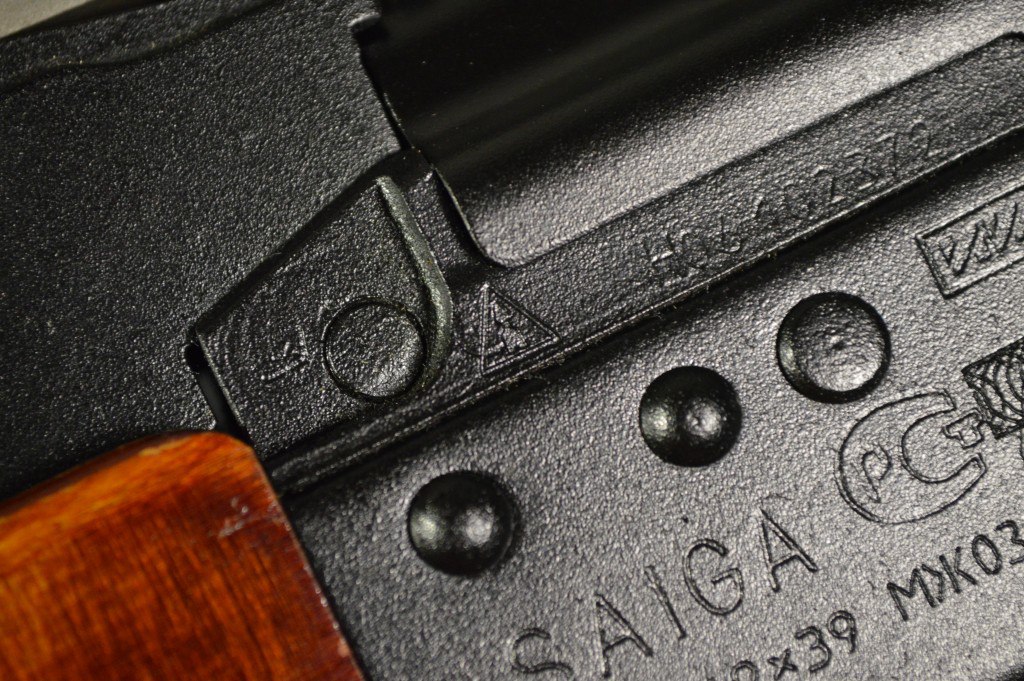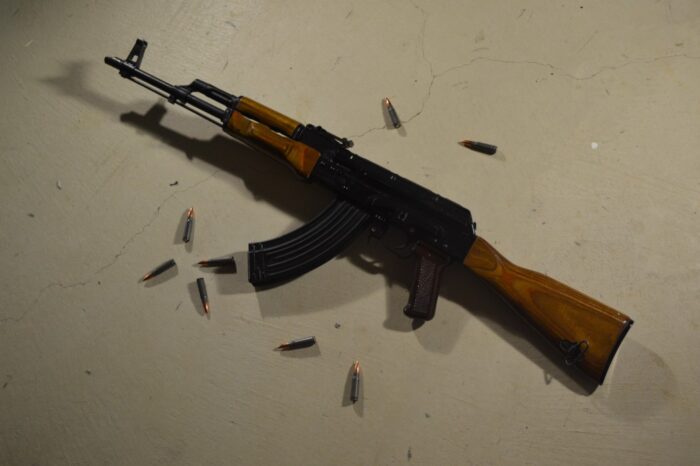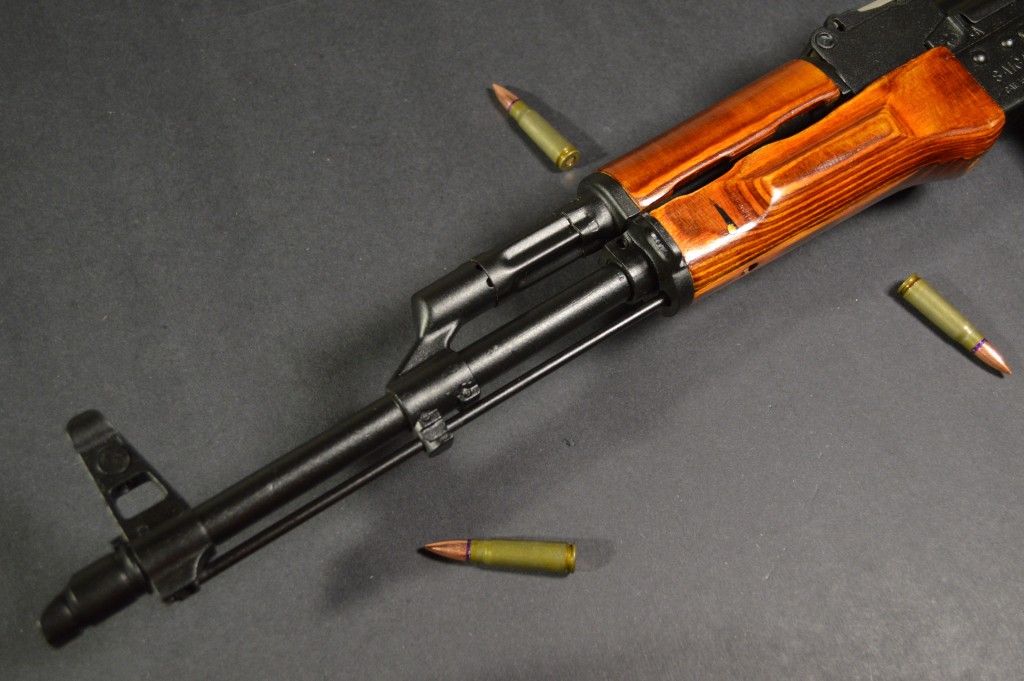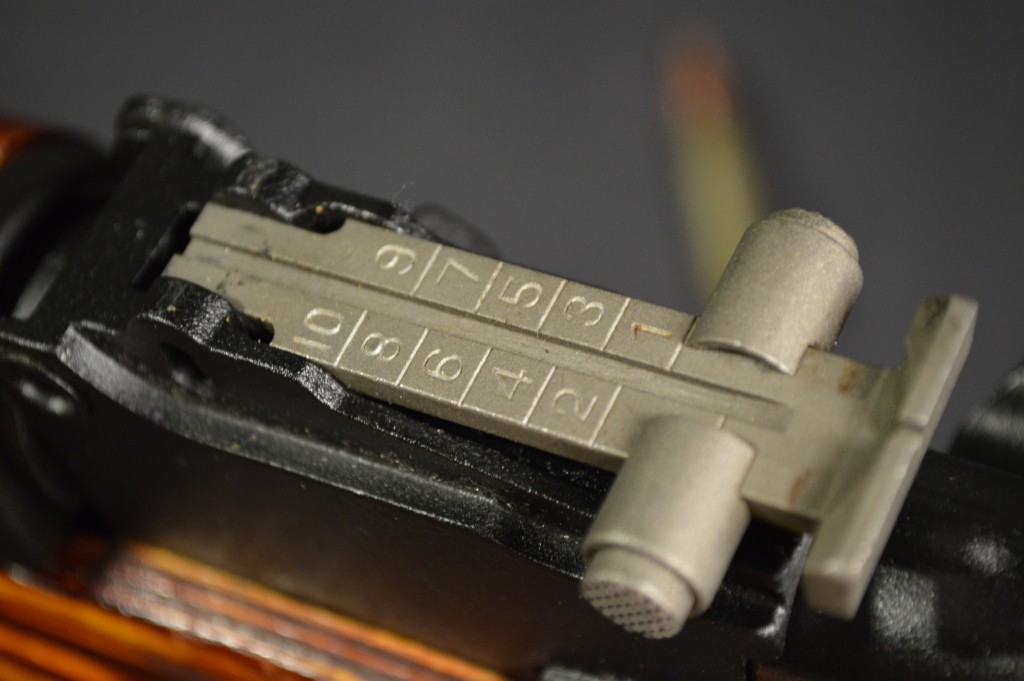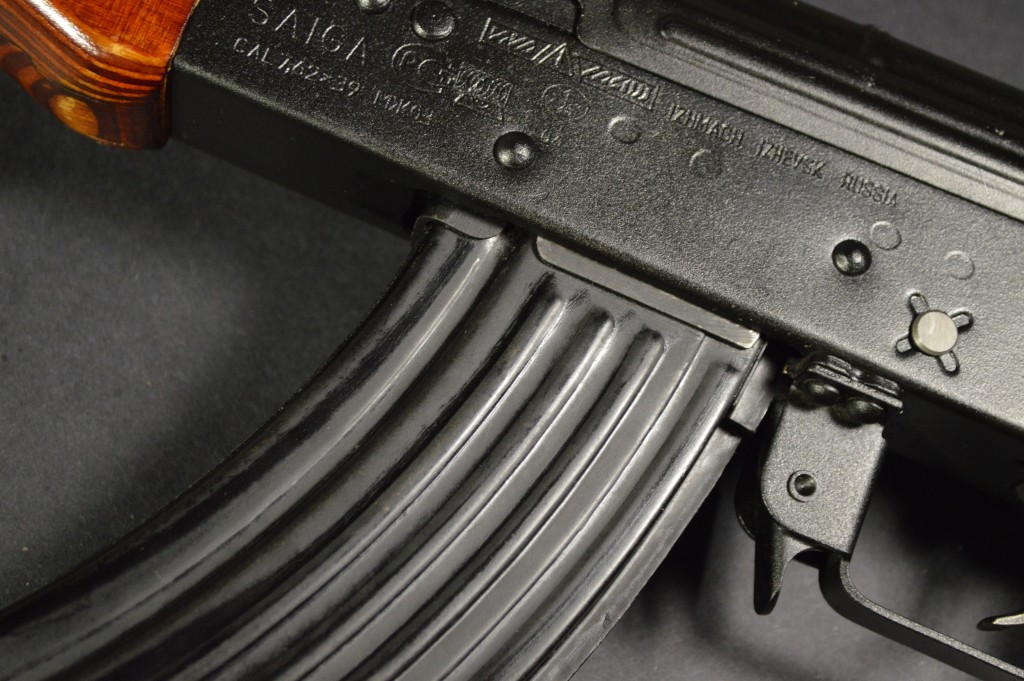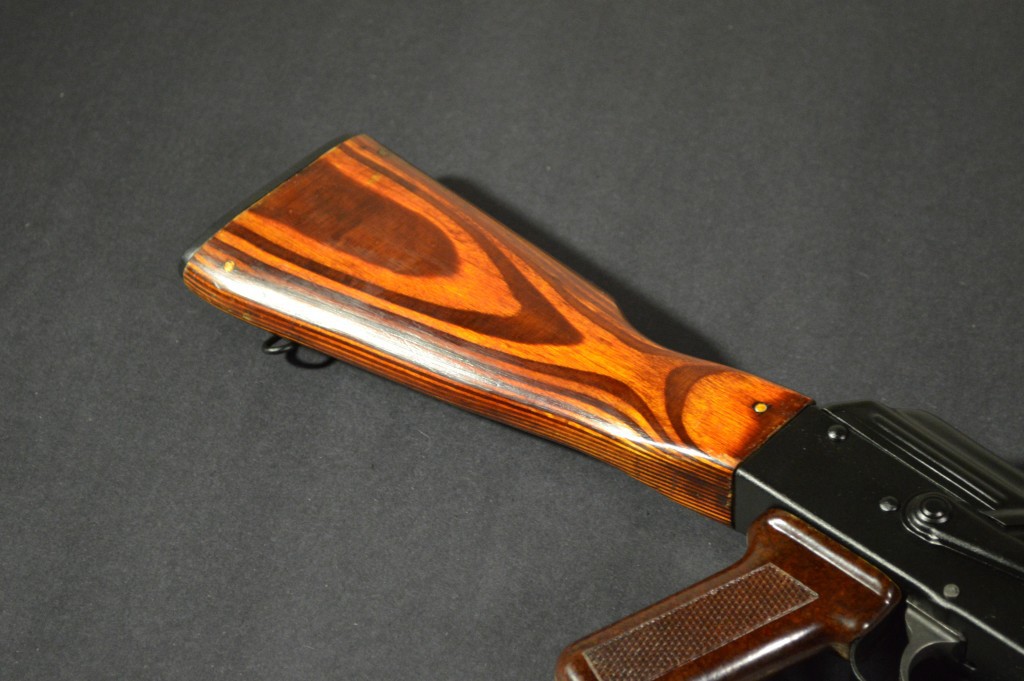Featured: Saiga Late Izhmash AKM Clone
Unlike modern rifles like the venerable AR-15, each AK seems to be its own beast, an animal that only seems to grow more attractive with honest use. The Kalashnikov is genuinely one of the few modern rifles that look as much a piece of art as it is a firearm. Whether it’s the wood furniture or Cold War appeal, something about the AK simply keeps me coming back for more.
Today, we will take a look at a cornerstone of my collection, my Saiga late-model AKM clone. Inspired by the last AKMs to come off Izhmash lines in 1977, this rifle took six years to complete and represents one of the most beautiful AKM generations. Let’s take a look at this unique build.
Parts List
- Saiga IZH-132 7.62x39mm rifle
- Late production Izhmash wood furniture, original finish
- Bakelite pistol grip with correct 27/1 mold numbers
- US muzzle brake
- Izhmash cast front sight block
- Izhmash cast gas block
- Romanian lower handguard retainer
- Unissued Soviet gas tube
- Izhmash AKM rear sight block
- Izhmash AKM sight leaf
- Unissued Russian AKM dust cover
- Soviet AKM trigger guard
- US Tapco G2 trigger group
- US gas piston
- Soviet side stamp steel magazine
- US follower
The Rifle
When I started this project, my goal was to build the “most Russian” AKM clone possible. It started as a plain IZH-132 Saiga with a sporter stock and a polymer forearm. Shortly after purchasing the rifle, I ordered a US-made stock set from Ironwood designs and endeavored to complete the basic pistol grip conversion myself. While the modifications went relatively smoothly, I quickly realized that changing out the barrel parts would be a much greater challenge.
After months of searching for a proper front sight, gas block, and handguard retainer, I nearly gave up and used East German parts for the remainder of the build. Fortunately, some knowledgeable and generous enthusiasts at theakforum.net stepped up with these parts in rapid succession, and the rifle was saved from an undeserved fate. With Soviet parts in hand, I sent the Saiga to Dave Trevino at Cold War Classics (now defunct) for front end conversion.
The results of Dave’s work were impressive to say the least. He welded the old gas port and drilled a new one to accommodate the AKM slanted gas block. After installing the new hardware, he even gave the barrel a new coat of paint to cover the conversion scars. I also had him engrave a proper Izhmash arrow and triangle on the front trunnion for authenticity’s sake.
At this point, the Saiga was reasonably close to being done, but I was not pleased with the appearance of the Ironwood Designs wood set. Late-model AKMs did not feature wood pistol grips from the factory, and while Ironwood’s product is very nice, it is not entirely accurate for a Soviet clone. After almost five years on the rifle, I finally sold the set last August and picked up an unissued set of Soviet laminate to replace it.
Even with the new wood, there were still several issues that needed to be addressed. First, the Saiga’s original trigger pin holes left visible flaws at the rear of the firearm’s receiver. Second, I had not properly replaced the trigger guard after conversion. Third, the bullet guide that is necessary for proper feeding from military magazines had yet to be installed. Lastly, the Saiga’s AK-100 series rear sight block simply would not fly on my envisioned AKM build. Clearly, more work was needed.
Thankfully, several different Soviet AKM parts have been available from Cope’s Distributing over the last few years. Earlier this summer, I picked up a proper rear sight block and trigger guard from them. Based on recommendations from the AK community, I shipped the Saiga to Two Rivers Arms for welding and final conversion.
What came back was nothing short of amazing. The prior trigger pin holes were practically invisible, the new trigger guard was solidly riveted, and the AKM rear sight block sat straighter than the original AK-100 series part. I also had Two Rivers remove the side optics rail as few Soviet AKMs featured such a luxury and the AK-103 version on the Saiga looked out of place on a 1970s clone.
Since I had good luck with appliance epoxy on my Romanian AES-10B, I opted for a similar finish on this Saiga. After examining several original AKM’s, I was convinced that the factory rifles had a satin, inky black finish that was not nearly as glossy as many enthusiasts think. For this particular project, I applied the epoxy in 5 very light coats sprayed from 14 inches away and then baked at 400 degrees Fahrenheit for one hour. In my opinion, it turned out perfect, in an AK sort of way.
While the project seemed to be done, I really could not get past the ugly, greenish replacement furniture. Every original example I found had beautiful burnt orange furniture. My laminate simply did not look like factory parts, and I needed to do something about it before I could consider the clone truly complete. To my amazement, Rusmilitary had some original Soviet AKM wood in stock. Before July of this year, complete AKM furniture sets in very good or better condition were practically impossible to find. With the new wood, the project was finally complete.
Conclusion
While this Saiga lacks receiver dimples, is internally an AK-103 (different trunnions, carrier, and bolt than the AKM), and features commercial receiver markings, I am incredibly pleased with the results. It is the closest approximation of a late AKM I have ever seen in a Saiga and until relatively recently, was one of only a handful of Saiga-based AKM conversions in the United States. Considering it took six years to complete, it should be no surprise that the rifle is a cornerstone of my collection.
Even so, I probably would not pursue such an ambitious project again. It simply took far too long to accumulate parts and the end result is only marginally more impressive than outright kit builds. I once had parts gathered to do a similar, but even more difficult AKMS clone with a Saiga as the base. This would have involved a complete rear trunnion swap and receiver machining to accommodate the folding stock, but reflection on this late AKM clone steered me away from such an endeavor.
An information security professional by day and gun blogger by night, Nathan started his firearms journey at 16 years old as a collector of C&R rifles. These days, you’re likely to find him shooting something a bit more modern – and usually equipped with a suppressor – but his passion for firearms with military heritage has never waned. Over the last five years, Nathan has written about a variety of firearms topics, including Second Amendment politics and gun and gear reviews. When he isn’t shooting or writing, Nathan nerds out over computers, 3D printing, and Star Wars.

